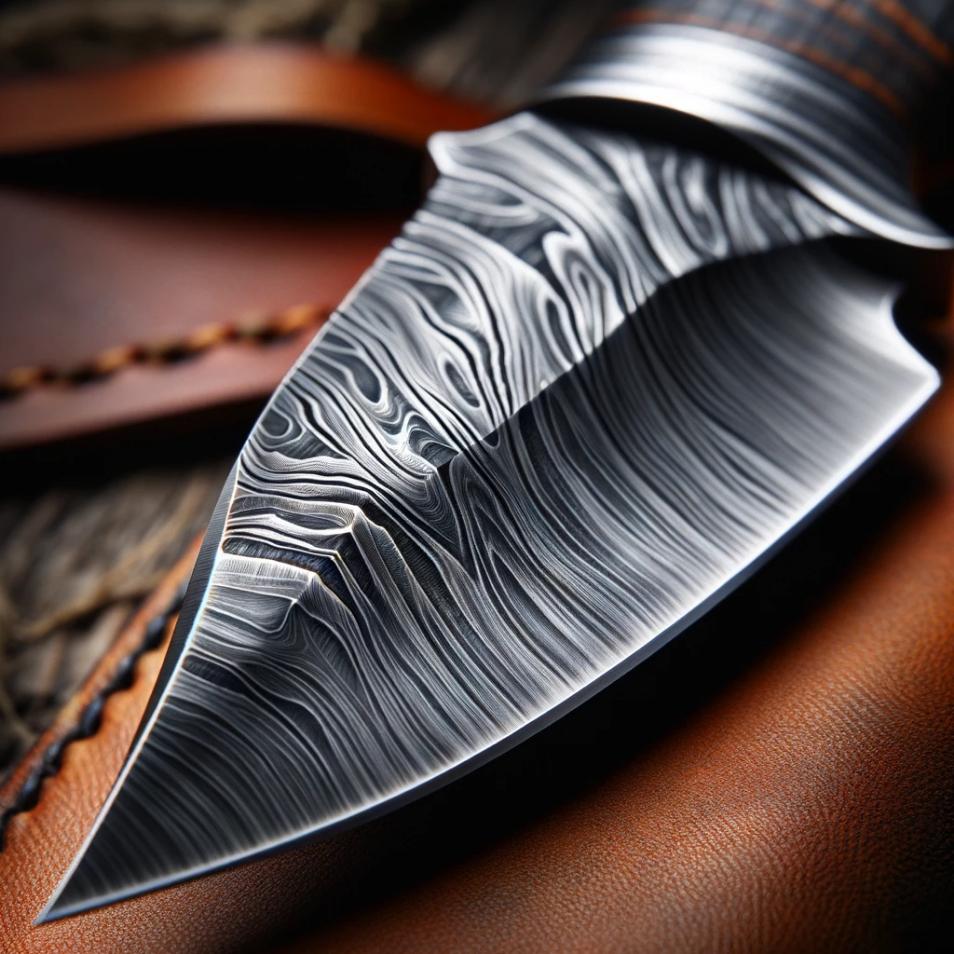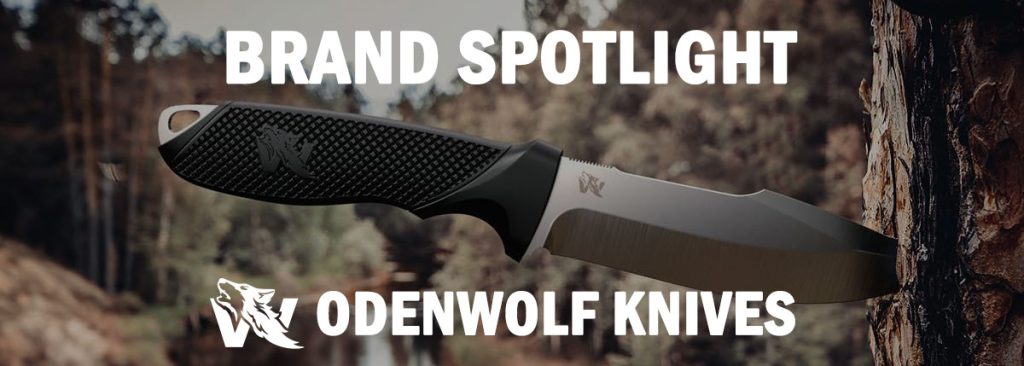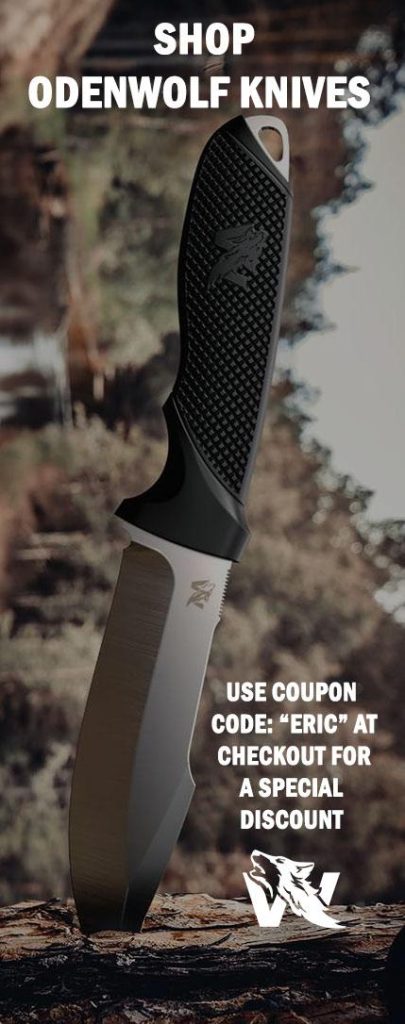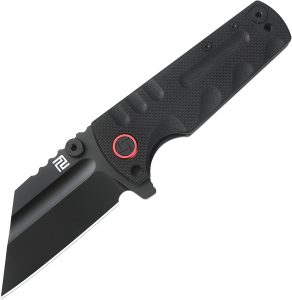Sharing is caring!

Understanding Knife Steel - A Guide to Common Grades and Their Uses
Table of Contents
Choosing the ideal knife involves carefully considering the world of steel types. Each variety of knife steel brings its own set of traits, designed to meet diverse requirements and tastes. There is no singular best steel. Rather, different steels are optimized for different uses based on their hardness, edge retention, corrosion resistance, sharpenability, and other factors. Let’s explore some of the most commonly used knife steels in detail:
Properties of Knife Steel: A Detailed Guide
When selecting the perfect knife, understanding the properties of different types of steel is crucial. Not all knife steels are created equal, and each type offers unique characteristics that cater to various needs and preferences. From the rugged durability of American-made steels to the precision of Japanese craftsmanship, here’s a detailed look at some popular knife steels and their global origins.
- 420 Steel: A lower-end stainless steel known for its corrosion resistance. It’s less expensive, easier to sharpen, but doesn’t hold an edge as well as higher-end steels. Commonly used for general-purpose knives and budget-friendly outdoor knives.
- 440 Steel: A higher grade of stainless steel, often used in kitchen knives. 440A, 440B, and 440C are the variants, with 440C being the highest quality among them, offering better edge retention and corrosion resistance. Ideal for high-end kitchen knives and professional chef knives.
- D2 Steel: A high-carbon, high-chromium tool steel known for its hardness and edge retention. It’s less corrosion-resistant than stainless steel but excellent for heavy-duty outdoor knives, survival knives, and tools requiring a durable edge.
- Carbon Steel: Known for its sharpness and edge retention, carbon steel is more prone to rust and requires more maintenance. It’s favored for bushcraft knives, traditional survival knives, and heavy-duty cutting tools.
- Damascus Steel: Renowned for its distinctive patterns, Damascus steel is often used in decorative knives, high-end chef knives, and collector’s items. It’s made by layering different types of steel and forging them together.
- Damasteel: A specific brand of high-quality Damascus steel, known for its strength, corrosion resistance, and unique patterns. It’s often used in premium outdoor knives, high-quality hunting knives, and specialized chef knives.
- Chrome-Molybdenum Steel: Also known as Chromoly steel, this is an alloy steel that includes chromium and molybdenum. It’s known for its strength, toughness, and resistance to wear and fatigue. Commonly used in industrial tools, durable outdoor knives, and heavy-duty applications.
- VG-10 and Aogami (Japan): High-quality steels used in traditional Japanese knives like the Santoku and Nakiri. Known for sharpness and edge retention, these steels are a hallmark of Japanese craftsmanship, ideal for precision cutting tasks.
- X50CrMoV15 (Germany): A tough, durable steel used in many Western-style chef’s knives. German steel is renowned for its quality and durability, making it a popular choice for professional kitchen use and culinary enthusiasts.
- CPM-S30V and 154CM (United States): American steel mills produce these high-quality steel varieties, popular in modern, high-end knives. They are known for their exceptional edge retention and durability, suitable for premium pocket knives and specialized kitchen knives.
- Sandvik 12C27 (Sweden): A high-quality stainless steel used in many outdoor and survival knives. Swedish steel is known for its excellent corrosion resistance and is a preferred choice for rugged use in harsh environments.
- 8Cr13MoV (China): A versatile range of steels, including budget-friendly options. Chinese steels like 8Cr13MoV are common in more affordable knives, offering a good balance of quality and value for everyday use.
- Various Steels (Italy, Spain, France): These European countries have a history of steel production, particularly for traditional regional knife designs. The steels from these regions are often associated with classic and regional knife styles, suitable for culinary and artisanal applications.
- Historical Steels (Sheffield, England): Sheffield was historically famous for steel production, especially during the Industrial Revolution. Sheffield steel was once a benchmark for quality and is still celebrated for its historical significance, often used in traditional and heritage knife designs.
Each of these steels has its advantages, tailored for different terrains and uses. Understanding these properties can help you make an informed decision when choosing a knife, ensuring that you have a tool that meets your individual requirements perfectly.
For more detailed information on knife steel properties and their applications, you can explore resources like Knife Informer’s Guide to the Best Knife Steel, which offers an in-depth analysis of various steel types and their key characteristics.
Knife Steel Guide: Matching the Right Steel to Your Knife Needs
| Steel Type | Suitable Knife Types |
|---|---|
| 420 Steel | General-purpose knives, budget-friendly outdoor knives |
| 440 Steel | High-end kitchen knives, professional chef knives |
| D2 Steel | Heavy-duty outdoor knives, survival knives |
| Carbon Steel | Bushcraft knives, survival knives, heavy-duty tools |
| Damascus Steel | Decorative knives, collector’s items, high-end chef knives |
| Damasteel | Premium outdoor knives, high-quality hunting knives |
| Chrome-Molybdenum Steel | Industrial tools, durable outdoor knives |
| VG-10 and Aogami (Japan) | Traditional Japanese knives (Santoku, Nakiri), precision cutting tasks |
| X50CrMoV15 (Germany) | Western-style chef’s knives, professional kitchen use |
| CPM-S30V and 154CM (United States) | Modern, high-end knives, premium pocket knives, specialized kitchen knives |
| Sandvik 12C27 (Sweden) | Outdoor and survival knives, rugged use in harsh environments |
| 8Cr13MoV (China) | Affordable knives, everyday use |
| Various Steels (Italy, Spain, France) | Classic and regional knife styles, culinary and artisanal applications |
| Historical Steels (Sheffield, England) | Traditional and heritage knife designs |
Where does the steel come from that knifes makers use?
Steel used by knife makers comes from various sources around the world, each known for producing specific types of steel with unique properties. Here are some notable regions and their contributions:
| Steel Type | Country/Region | Characteristics | Common Uses |
|---|---|---|---|
| 420 Steel | Sourced Globally | Corrosion resistance, easy to sharpen | General-purpose, budget-friendly outdoor knives |
| 440 Steel (A, B, C) | Sourced Globally | Higher grade stainless steel | High-end kitchen, professional chef knives |
| D2 Steel | Sourced Globally | High-carbon, high-chromium, hard | Heavy-duty outdoor, survival knives |
| Carbon Steel | Sourced Globally | Sharpness, edge retention | Bushcraft knives, survival knives, heavy-duty tools |
| Damascus Steel | Sourced Globally | Distinctive patterns | Decorative knives, high-end chef knives |
| Damasteel | Sourced Globally | Strength, corrosion resistance, unique patterns | Premium outdoor, high-quality hunting knives |
| Chrome-Molybdenum Steel | Sourced Globally | Strength, toughness, wear resistance | Industrial tools, durable outdoor knives |
| VG-10, Aogami | Japan | Sharpness, edge retention | Traditional Japanese knives (Santoku, Nakiri) |
| X50CrMoV15 | Germany | Tough, durable | Western-style chef’s knives |
| CPM-S30V, 154CM | United States | High-quality, edge retention | Modern, high-end knives |
| Sandvik 12C27 | Sweden | High-quality stainless steel | Outdoor, survival knives |
| 8Cr13MoV | China | Budget-friendly | Affordable knives |
| Various | Italy, Spain, France | Traditional regional styles | Regional knife designs |
| Historical steels | Sheffield, England | Historical significance | Traditional knives |
Each region’s steel has characteristics that cater to different needs in knife making, such as edge retention, toughness, and resistance to corrosion. Knife makers often choose steel based on the specific type of knife they are crafting and its intended use.
The World’s Leading Steel Plants Shaping Knife Making
In our exploration of the diverse and specialized world of knife steels, it’s fascinating to consider the source of these high-quality materials. The properties and characteristics of knife steels, ranging from the rugged durability of D2 Steel to the precision and artistry of Damascus Steel, are deeply influenced by their manufacturers. Below is a list of some of the most renowned steel plants around the globe, each contributing to the knife-making industry with their unique steel formulations. These manufacturers are responsible for producing the very steels, such as VG-10 from Japan or the high-end CPM steels from the United States, that we previously discussed. Their expertise and innovation in steelmaking not only define the quality of the knives but also reflect the rich history and technological advancement in metallurgy. From the historic forges of Sheffield to the advanced facilities of Crucible Industries, each of these steel plants plays a pivotal role in shaping the tools and blades that are essential in both everyday use and specialized applications.
Sandvik (Sweden): Known for producing high-quality stainless steel, such as Sandvik 12C27, commonly used in knives.
Crucible Industries (United States): Famous for producing high-end steels like CPM-S30V, CPM-S35VN, and other CPM steels used in premium knives.
Hitachi Metals (Japan): Renowned for producing advanced Japanese steels like Aogami (Blue Steel) and Shirogami (White Steel), used in traditional Japanese knives.
Böhler-Uddeholm (Austria): A leading manufacturer of tool steel and stainless steel, known for steels like M390, used in high-end and custom knives.
Carpenter Technology Corporation (United States): Produces high-quality stainless and tool steels, including popular knife steels like CTS-XHP and Carpenter CTS-204P.
ThyssenKrupp (Germany): A major steel producer that offers various high-quality steels used in knife making.
Damasteel (Sweden): Specializes in high-end Damascus patterned steel, known for its strength and unique designs, used in luxury knives.
Aichi Steel (Japan): Produces VG-10 steel, a popular choice for high-end kitchen knives.
Baosteel (China): One of the largest steel producers in China, supplying various steel types, including those used in knife making.
Sheffield Forgemasters (United Kingdom): While not a primary supplier for knife steel, Sheffield has a historic significance in steel production and still produces high-quality steel.
Latrobe Specialty Metals (United States): Known for producing tool steels like D2, widely used in knife making.
Akers National Roll Company (United States): Produces tool steel that is often used in knife making.
Posco (South Korea): One of the world’s largest steel manufacturers, supplying various grades of steel.
Outokumpu (Finland): Known for high-quality stainless steel production, used in various applications including knives.
Nippon Steel & Sumitomo Metal Corporation (Japan): A major global player in the steel industry, producing a wide range of steel products.

Hey, I’m Eric, your go-to guy at Eric’s Gadget Reviews. This is my little slice of the web where I spill the beans on all sorts of gadgets, yard tools, and anything that catches my eye (and hopefully yours too).
Sharing is caring!






